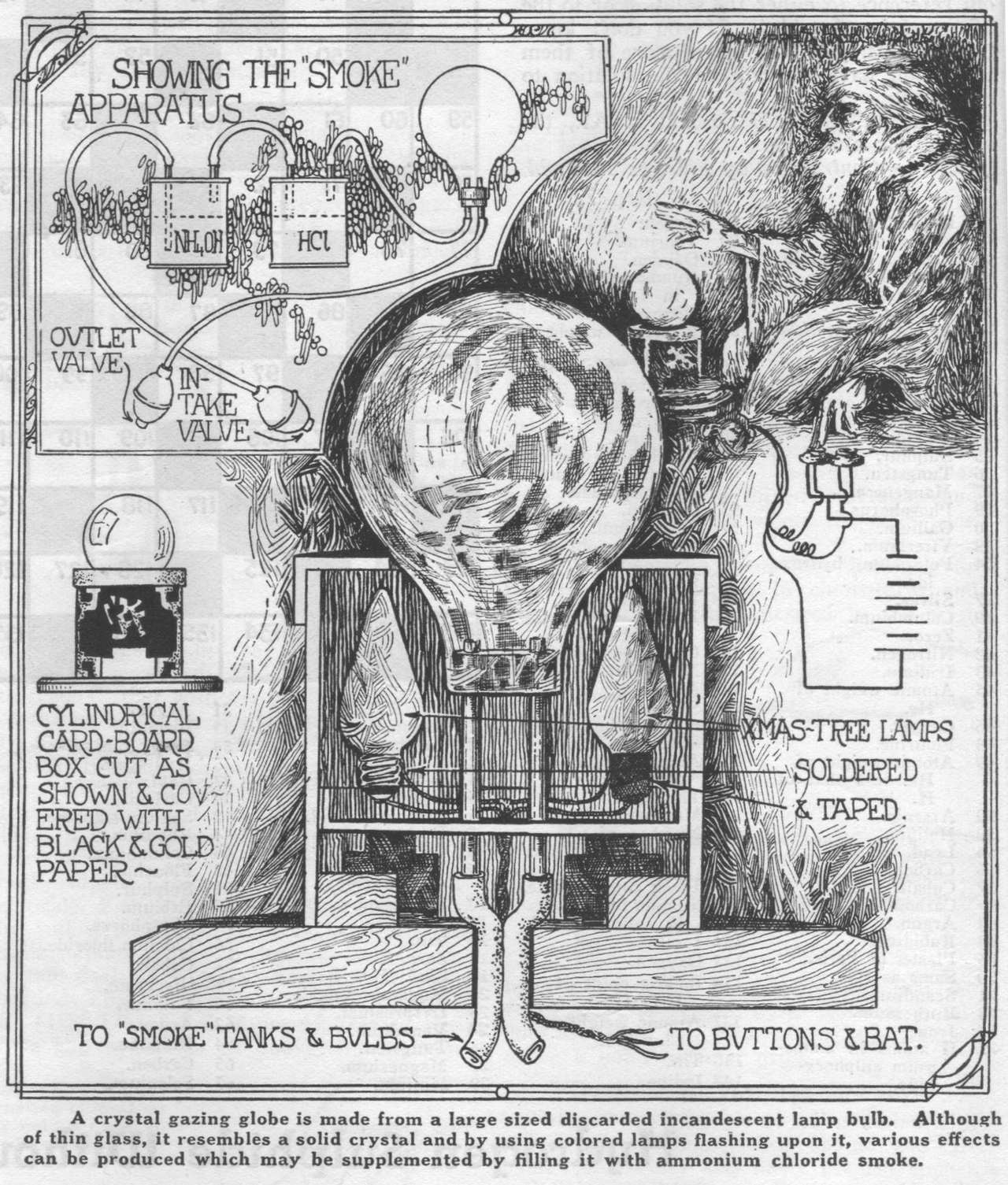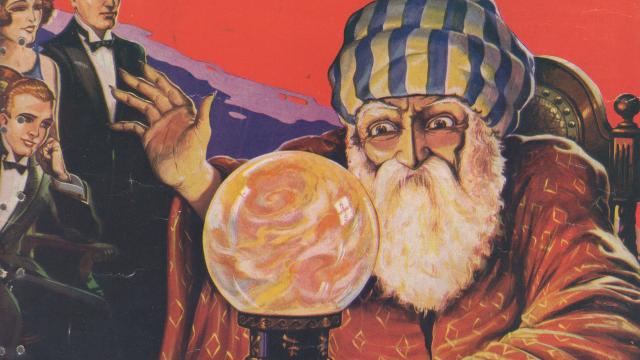Tech magazines of the 1920s were all about debunking magicians who claimed paranormal powers, conjurers and other frauds. But they also showed you how these people pulled off their greatest tricks. Like in this November 1925 issue of The Experimenter where you could learn how to make a smoking crystal ball.
This apparatus didn’t utilise any paranormal intervention, but it was impressive nonetheless. In the illustration below readers saw how to make their very own smokey crystal ball to “mystify visitors to your laboratory”. All that was needed was some cardboard, a few wires with pushbuttons, a couple of large Christmas light bulbs, some jars and a handful of tubes. And some chemicals if you wanted smoke.

From the November 1925 issue of The Experimenter:
The pedestal is constructed from a cylindrical cardboard box, cut as shown in the detail, and covered with black paper. It is then decorated by pasting Chinese characters cut from gold paper upon the black background. The cylinder is mounted on a hardwood disc, which serves to strengthen the pedestal and to prevent its tipping over.
Several variously coloured lamps (those used for Christmas tree decoration are best) are mounted inside the pedestal, so that their light is thrown up through the crystal. A green lamp will produce a very spooky effect, while one of an orange colour, when flashed quickly, gives one the impression of a flash of flame within the crystal. The wires from the lamps are run down through the base and are led to a concealed battery of push buttons. They may be supplied from a toy transformer or by a storage battery.
To further the magical effect produced by the coloured lights, a means for filling the globe with a white vapor is provided. A two-hole rubber stopper, carrying two short glass tubes, is inserted in the neck of the globe as shown. Rubber tubing of a small diameter is led from these tubes through the base to the “smoke” jars and bulbs. The vapor-making apparatus is shown in the upper illustration. It consists of two glass jars, the connecting tubing and two rubber bulbs. One of the latter has an outlet valve in its outer end, while the other is provided with an intake valve.
So knock yourself out and impress all your friends — even if you don’t have a Jazz Age laboratory to show off! Just be careful with that ammonium chloride!
Pictures: Scanned from the November 1925 issue of The Experimenter magazine
